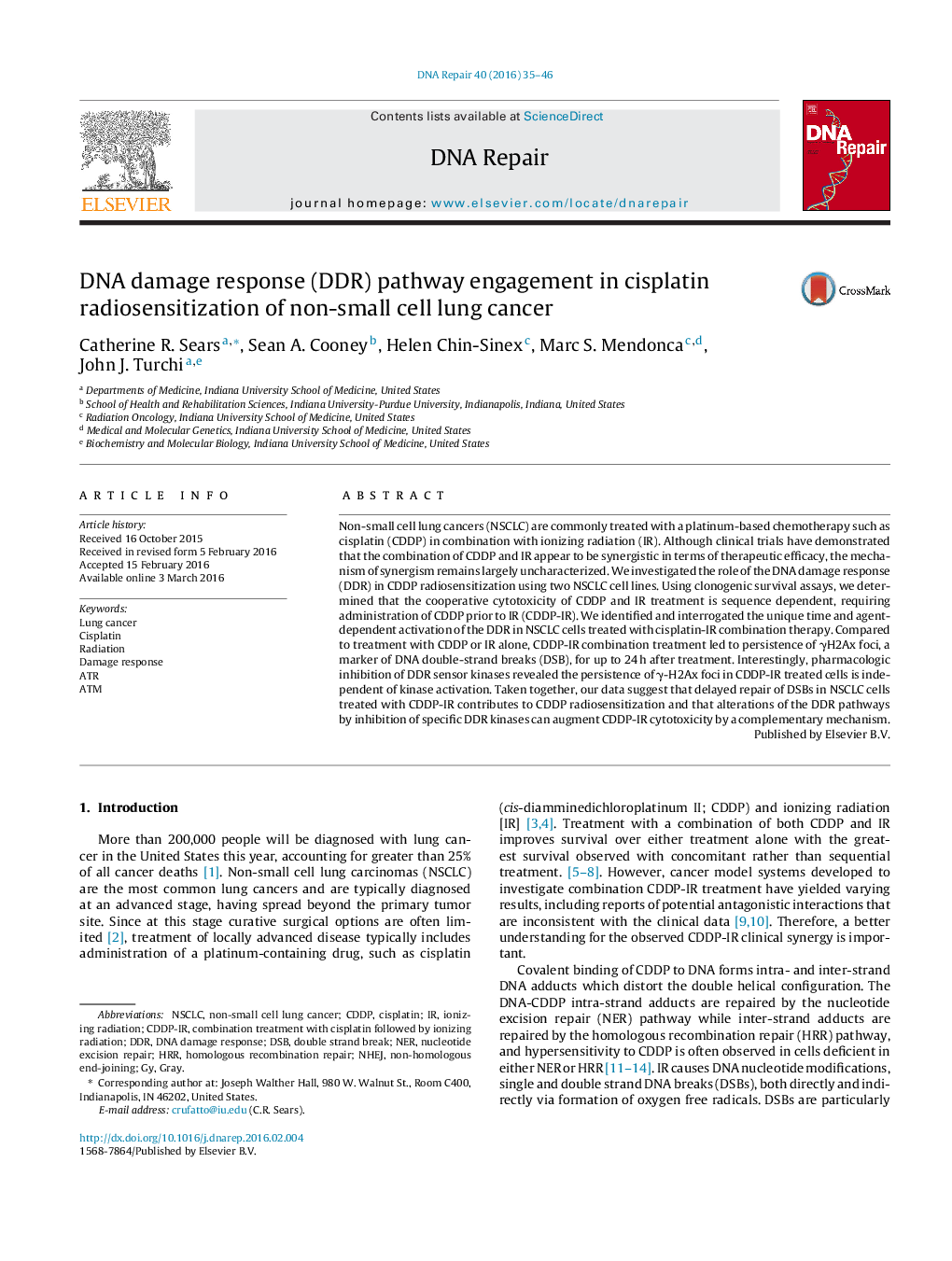| کد مقاله | کد نشریه | سال انتشار | مقاله انگلیسی | نسخه تمام متن |
|---|---|---|---|---|
| 1980000 | 1539388 | 2016 | 12 صفحه PDF | دانلود رایگان |

• Combination cisplatin–radiation causes sequence dependent cytotoxicity in non-small cell lung cancer.
• Treatment with combination cisplatin-ionizing radiation results in persistent DNA double strand breaks.
• Cells treated with ionizing radiation following cisplatin abrogate cisplatin mediated G2 arrest.
• Persistence of DNA double strand breaks caused by cisplatin-radiation therapy is independent of early DNA damage response kinases.
Non-small cell lung cancers (NSCLC) are commonly treated with a platinum-based chemotherapy such as cisplatin (CDDP) in combination with ionizing radiation (IR). Although clinical trials have demonstrated that the combination of CDDP and IR appear to be synergistic in terms of therapeutic efficacy, the mechanism of synergism remains largely uncharacterized. We investigated the role of the DNA damage response (DDR) in CDDP radiosensitization using two NSCLC cell lines. Using clonogenic survival assays, we determined that the cooperative cytotoxicity of CDDP and IR treatment is sequence dependent, requiring administration of CDDP prior to IR (CDDP-IR). We identified and interrogated the unique time and agent-dependent activation of the DDR in NSCLC cells treated with cisplatin-IR combination therapy. Compared to treatment with CDDP or IR alone, CDDP-IR combination treatment led to persistence of γH2Ax foci, a marker of DNA double-strand breaks (DSB), for up to 24 h after treatment. Interestingly, pharmacologic inhibition of DDR sensor kinases revealed the persistence of γ-H2Ax foci in CDDP-IR treated cells is independent of kinase activation. Taken together, our data suggest that delayed repair of DSBs in NSCLC cells treated with CDDP-IR contributes to CDDP radiosensitization and that alterations of the DDR pathways by inhibition of specific DDR kinases can augment CDDP-IR cytotoxicity by a complementary mechanism.
Journal: DNA Repair - Volume 40, April 2016, Pages 35–46